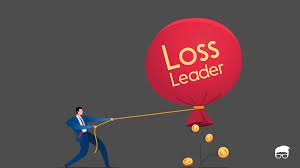
The Art and Strategy of Discounting
When is the last time you bought an item or service because you saw that it was “on sale”? When you read the ad, see the coupon, or hear the advertisement does your internal voice go off and say “be careful” or “it’s too good to be true” or a host of other thoughts that guide you in a different direction? But don’t we all want a good deal?
In an ever-competitive marketplace, companies frequently turn to special offers and discounts to secure new clients, sell more products and increase market share. There are also companies that offer discounts so frequently that customers delay purchases and subsequently question any regular pricing.
When should you decide to offer a discount and which discount is the most effective? Companies also need to understand the difference between selling products and a service at a discount.
Why people spend
Why do we buy something? We all have day to day needs, from food to toiletries. We also celebrate holidays and special events of all kinds. Why do we decide where to shop? Is it because of the best price, best selection, location, customer service, cleanliness, or online reviews?
Businesses spend countless hours and dollars trying to determine how to attract a new customer and retain an existing one. Buying is both emotional and mental.
Emotional Spending: People often make purchases for emotional reasons, such as buying gifts for loved ones, treating themselves to something enjoyable, or acquiring items that provide comfort or joy. This kind of spending is driven by the emotional satisfaction or happiness it can bring.
Mental Satisfaction: Some purchases may provide mental satisfaction or a sense of accomplishment, such as investing in education or personal development tools.
Understanding the drivers behind a customer’s purchase can be highly effective for designing a promotional offering.
Differentiators
Like so many other parts of business, differentiating factors are critical for success. How are your sales processes similar or different from your competition? The standard promotions like holiday specials and end of the season clearances are predictable and don’t necessarily attract new customers. However, creating a unique offering at another time or at the same time as everyone else who is offering the same old thing can be a differentiator.

What are loss leaders & how they can be differentiators?
Attract Customers: Offer a product at a price lower than its cost, aim to attract customers to your store or website.
Upsell and Cross-Sell: Once your customers are drawn in by the loss leader, you hope they will buy other products or services that are more profitable.
Build Customer Loyalty: By offering a good deal, businesses can foster customer loyalty, encouraging repeat business.
Increase Market Share: Loss leaders can be used to gain a larger share of the market or to compete with your rivals by offering attractive deals.
Loss leader cautions
Financial Impact: Selling products at a loss can impact short-term profitability, so it must be carefully managed to ensure it doesn’t lead to unsustainable losses.
Customer Expectations: Frequent use of loss leaders might lead customers to expect continual discounts, which can impact the perceived value of products or services.
Competitor Response: Competitors may react to loss leader strategies with their own promotions or price adjustments, potentially leading to a price war.
Discounting a service such as home care or home modifications
In my opinion, service industry costs are designed more with customer emotions in mind. Window installation, landscaping, babysitting, beauticians, legal services, auto repair, personal training, animal care, home care services, etc. The list is endless. As you read through each of these ask yourself how a discount could/would impact your decision to purchase their service. For some, it’s a no brainer! Heck yes I want to pay less for landscaping. But heck no, I am less likely to hire a home care company for $15 per hour as I will question the quality of the service provider.
We need to remember how our customers view discounts. They are not always viewed as favorable. Over 20 years of business ownership, I have witnessed that even highly financially beneficial discounts can be ignored. We don’t always know the subconscious influences buyers have and many times they don’t know either. We can certainly measure our sales processes and outcomes and also survey our customers to improve our understanding to construct an effective sales promotion.
Until you know what sways your customer, stay away from “free”. Assess, survey, and measure the design a promotional campaign.
In Conclusion
If you own a business, at some point you will execute a discount or promotional plan. Before you do so specifically design the desired outcome for the long run not just for the immediate sale. Discuss your ideas with other business owners not in your field. Get feedback and learn what techniques they have used before you decide to start your own campaign. As always, if you are looking for some coaching strategies around building your sales process, call me for a free 15 minute coaching session at 440-212-4987.
